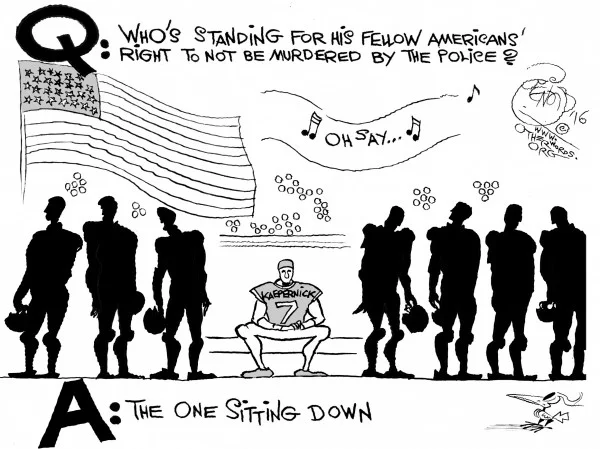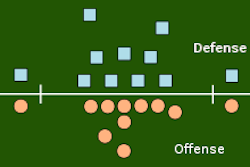
Chris Powell: Wallowing in the politically correct in Conn.
Politically correct LED bulb.
Listening to Connecticut Gov. Ned Lamont and U.S. Sen. Richard Blumenthal last week, Connecticut might have thought that government has roundly succeeded in all its important functions and now doesn't have enough to do.
The governor issued a statement opposing President Trump's relaxing of federal energy-efficiency standards so that traditional incandescent light bulbs can continue to be manufactured and used. More modern bulbs, the governor noted, consume much less electricity and work longer than traditional bulbs and thus can save a lot of money.
But the new bulbs also cost more money than the old ones, and while the old ones generate more heat than light, that heat is not all wasted energy, since it is welcomed when the weather is cold.
In any case if the new bulbs really save so much money, people shouldn't need the government to coerce them with regulation or legislation. If, as such coercion suggests, the new bulbs can't put the old ones out of business on their own, people apparently find something undesirable about the new ones.
But the governor did not address that point. Instead he said he wants the General Assembly to pass Connecticut's own coercive legislation to prohibit choice in light bulbs.
Meanwhile Connecticut keeps deteriorating with daily shootings in its anarchic cities, tax increases, neglect of transportation infrastructure, dismal educational performance, child neglect, and so on. As a result inefficient light bulbs don't make even the top 50 on a list of the state's problems. But that may be why the governor is so interested in them and other trivia -- to distract from state government's failure with any problem that matters much, and, of course, to do some politically correct posturing against the insufferable Trump.
As the governor busied himself with light bulbs, Senator Blumenthal seemed to be aspiring to become commissioner of the National Football League. The senator held a press conference at the state Capitol to complain again that the league isn't tough enough on players accused of domestic violence.
But domestic violence does not involve misconduct on the job. It is criminal and thus a matter for law-enforcement authorities.
Nor does the federal government have any jurisdiction over football players particularly. While the NFL has a business exemption from federal antitrust law, an exemption shared with other pro sports leagues, the appropriateness of those exemptions has nothing to do with domestic violence. The exemptions probably should be repealed regardless of any off-the-job misconduct by players.
People in all occupations commit domestic violence. So why is domestic violence by pro football players of special concern to Senator Blumenthal? Does he think that pro football players are uniformly heroes in the public eye? That cliche expired under a tidal wave of well-publicized thuggishness. As newspaper columnist Mary McGrory wrote decades ago: "Baseball is what we were. Football is what we have become."
If the NFL isn't tough enough on domestic violence for the senator, it may be because of concern for due process of law. Why should the league be tougher than a court? A court sentencing a pro football player can take him out of the game faster than the league can, and without the league's financial liability.
And is the senator really sure that government itself is tough enough on its own employees who commit domestic violence? Or would it be too politically incorrect for him to risk offending the government employee unions?
Chris Powell is a columnist for the Journal Inquirer, in Manchester, Conn.
Jill Richardson: Whites should consider what it's like being black
Via OtherWords.org
As white people across the nation criticize Colin Kaepernick and other NFL players who “take a knee” for the national anthem, they ought to know something first.
White people in America have no idea what life is like for black people in America.
How can I make such a broad statement? How would I possibly know?
For one thing, I’m white. I grew up in a mostly white town. Like many white people, I was raised to oppose racism, at least as I understood it then. I celebrated Rosa Parks and Martin Luther King, Jr.
I wasn’t quite sure who Malcolm X was — I’d heard the name, but we never studied him in school. I’d never heard of other black leaders like Marcus Garvey or Bayard Rustin.
I never used the N-word. I wouldn’t even write it in my essay on Huckleberry Finn in ninth grade English. And I’d never even heard of most other racial slurs for African Americans — or any other race for that matter. Nobody used language like that.
But that was the extent of my background when, three years ago, I found myself assigned to be a teaching assistant in a sociology class on race. The professor would give the lectures; I would lead the discussions.
To say it was terrifying is an understatement. I didn’t know any of the material I now had to teach, and I was flying by the seat of my pants.
Fortunately, I did know how to listen. And I know how to empathize.
In the years since, I’ve taught hundreds of students of all races — first as a teaching assistant and now as an adjunct professor.
And it’s funny. When you start listening, you learn things.
I learned that being black in America means people who aren’t black think it’s OK to touch your hair whenever they want — often without asking, even if they don’t know you.
When my students inadvertently made racist remarks, it didn’t hurt me as a white person. If I weren’t white, it would’ve stung. And I would’ve had to remain cool and professional while continuing to do my job — something I learned nonwhite people have to do all the time.
I learned that decades of housing discrimination robbed black people of wealth as most whites bought homes and built equity. The effects of those disparities live on.
Long after segregation was legal, we continue to live in racially segregated neighborhoods, and students like Michael Brown attend schools so poor I couldn’t even fathom that such a place would be called a school.
How can anyone succeed in college or find a good job if they barely even have one class a day where a teacher shows up and teaches using, as was the case in a district detailed in a 2015, This American Life, the NPR show?
Each year, I face the same conundrum: My students inhabit different worlds. The white students think that they know all there is to know about life in America. My job is to gently show them they have no idea — as I had no idea — what it’s like not to be white in America.
I can’t speak for black people, and I wouldn’t try to. They speak very well for themselves. I’ll just say that those of us who are white should listen when they do.
And to do that, white people must overcome their defensiveness. Not every protest against racism is a personal attack against them, the flag, the country, or whatever else.
So if you’re white, next time you see black football players take a knee and don’t understand, take it as a sign you have something to learn.
Jill Richardson is an OtherWords,org columnist.
Violent NFL players? What next?!
We're shocked, shocked that some NFL players turn out to be violent at home, too! People watch the NFL (and the NHL, etc.) because they want to see violence. The players are trained (and medicated) to be violent, though many, perhaps all, the players liked a certain level of violence in the first place.
Meanwhile, the NFL continues to be treated as a ''nonprofit'' because legislators, some of them wanting anxiously to display their masculinity by showing their real or feigned love of professional football, ignore the NFL gold mine.
Hypocrisy makes the world go round. And at some level, we're all killers.
--- Robert Whitcomb


